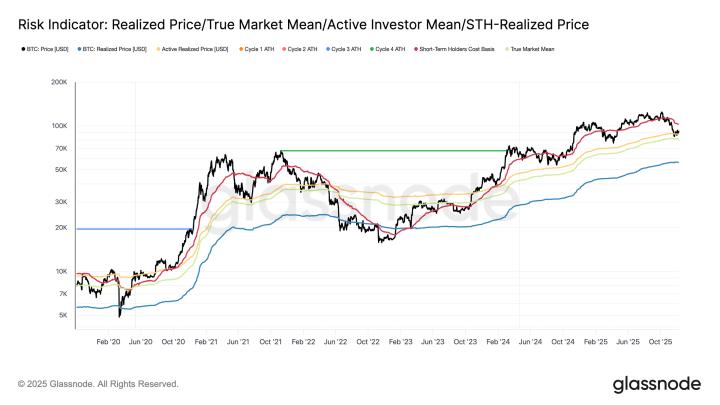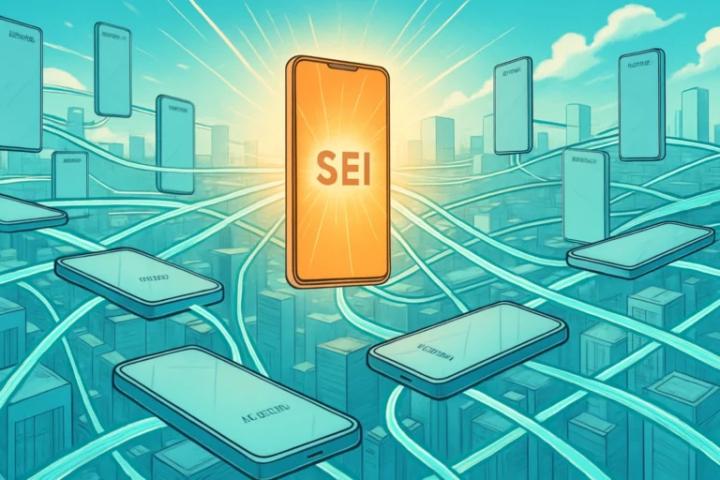Is DeFi dead?
It seems that not many people in the community are willing to talk about DeFi protocols anymore. But on the other hand, the family of former US President Trump is planning to build a new DeFi project, World Liberty FInancial. The popular meme has created tens of billions of transactions for Solana Dex. Lido, Uniswap, Pancake and even Ethena, which has emerged in this round of bull market, are still the most profitable on-chain protocols. Although DeFi's momentum is not strong enough, it wins in durability and stability.

Among them, the lending platform is one of the tracks with the largest on-chain capital capacity, and it is not an exaggeration to say that it is the most important, because Liquid Staking with a higher TVL is to some extent just a channel for Wrap, and platforms such as Lending and Dex are needed to have liquidity and a wide range of use cases.
As the entire crypto industry pursues PMF and actual revenue, many DeFi projects that rely on subsidies to survive and maintain data are no longer reliable. As the platform effect of DeFi becomes stronger and stronger, there are not many DeFi projects that can continue to create new highs in data in today's market. Among them, Morpho, which has accumulated more than 70 million US dollars in financing, has the strongest development momentum.
Morpho announced in August 2024 that it had received $50 million in financing from Ribbit Capital, a16z crypto, Coinbase Ventures, Variant, Brevan Howard, Pantera, Blocktower and more than 100 other investors. Founded in the last bull market, Morpho, which has risen again after a bear market trough, has also taken a similar path of rebirth as Solana and Pendle through innovation. Morpho is designed not only to serve end users, but also to provide support for developers and enterprises. Its goal is to go beyond the encryption field and become the cornerstone of a new Internet-native financial system.
Since its launch, Morpho has accumulated more than $3 billion in asset supply, becoming one of the most commonly used DeFi protocols in the world. More notably, Morpho has transformed from a "L2" similar to Aave and Compound to an original DeFi lending infrastructure. Morpho's TVL data is even close to the former "parent" L1 Compound, and some data dimensions have even surpassed Compound. Against the backdrop of the market's pessimism about DeFi, the rise of Morpho is highly instructive for the entire track.
Morpho team background, as well as Optimizer history and technology (Aave, Compound's "L2")
Just like Nvidia’s GPU dominance was developed through iterations and step-by-step search for usage scenarios, Morpho also gradually developed from improving and optimizing the market segments of AAVE and Compound.
Morpho, which emerged with the DeFi Summer, positioned itself to improve the capital efficiency of existing DeFi protocols in the initial stage of the protocol, "combining the liquidity pool model used by Compound or AAVE with the capital efficiency of the peer-to-peer matching engine used in the order book. Improve Aave or Compound by providing the same user experience, liquidity and liquidation parameters, but APY is increased due to peer-to-peer matching."
The initial version of Morpho simply deposits the user's funds temporarily on Aave or Compound to earn the platform's basic APY. If other users have lending needs, Morpho will take out the funds and lend them to users in need. This peer-to-peer lending agreement, coupled with many optimizations in the actual process, can improve the problem of retaining funds on the Aave platform and thus improve capital efficiency.
At this stage, Morpho’s main product is called Morpho Optimizers, which is a middleware built by Morpho for existing DeFi lending protocols to improve capital efficiency.
According to historical data found by DeFillama, the TVL of Morpho Optimizers peaked at around $400 million. According to current data, Optimizers can increase APY returns by 0.51% and 0.29% on Aave V2 and V3, respectively.
Morpho has a hardcore and solid founding team. The Morpho team consists of people with technical backgrounds who have worked on advanced topics in crypto for many years and founded the protocol during their university years. Paul Frambot serves as CEO and brings his blockchain engineering expertise from Telecom Paris and Polytechnique. Merlin Egalite has extensive software engineering experience from his previous positions at The Commons Stack, Kleros, Blockpulse and Paris Digital Lab. Mathis Gontier Delaunay, who was VP of Kryptosphere and is now in charge of research, and Julien Thomas, who has a Master's degree in Data from Polytechnique Montreal, is in charge of guiding the development.
As members of the founding team, none of the above four people have left the protocol since the cooperation, ensuring the continuous and timely expansion and development of the protocol. Similar to the popular Founder Mode, more competitive new products can be quickly iterated in the turbulent crypto market. In 2023, Morpho also introduced DeFi OG 0xloth, who previously worked at the stablecoin protocol mStable, to be responsible for Morpho's business work. Team members were also selected for the 2024 Forbes "30 Under 30" list.
However, if it is limited to this, Morpho will hardly stand out. Not only will it become a project comparable to the main protocol, but its importance and valuation will also be difficult to open up. Just like another DeFi star Pendle, Morpho has achieved exponential growth by adapting to the market's active transformation. The subsequent launch of Morpho's main product Morpho Blue has put it on the fast track of development.
Morpho's unique innovation Morpho Blue
TVL increased from 0 to nearly 1 billion in less than a year. This is the data performance of Morpho Blue. As the core functional module of Morpho today, Morpho Blue has a lot of clever design.
In simple terms, Morpho achieves professional team management, fund isolation and efficiency by dividing borrowing and lending into two independently controlled hierarchical modules: market and treasury. It not only has the advantages of Euler modular lending platform, but also retains the liquidity of monolithic lending platform such as Aave.

The vault is like a VC, and the assets are like LPs. Users earn income by depositing their assets in a vault curated by a third-party risk expert. Each vault has a unique risk configuration and strategy determined by the planner, and the professional planners who manage the vault will continue to optimize the allocation of vault assets, reducing the time occupied by users. It is worth noting that although there are managers who develop and optimize strategies, the funds are unmanaged, like most other lending protocols, and ownership remains in the hands of the users.
Markets are like startup protocols to be funded. Morpho allocates funds from all vaults to markets, but can only allocate funds to markets that are whitelisted by the planner. In Morpho's markets, each market contains only one borrowing asset and one collateral asset, with its own interest rate. The risk of each market is also limited to the market. Because the unique creativity of the market limits the risk of vault funds, there is more potential to create markets for more niche assets. Even if unexpected situations occur, bad debts are immediately shared among lenders.
Just like users are allocating funds, most of them choose stable investments, and some may choose investments with high risk preferences. Now in Morpho, the combination of vaults and markets provides users with a reasonable way to allocate funds. Morpho does not disperse funds to other protocols. Funds always flow within Morpho. Specifically, the path of funds is from lenders to Morpho vaults, and then to Morpho markets. Black swans in any one party's agreement will not result in 100% capital loss.
Of course, the fund operation mode in the Morpho vault is the well-known over-collateralization mode, and because of the vault-market model, both borrowers and lenders have higher efficiency. If you still remember the bad debt problems caused by credit loans in some previous RWA protocols, then you can rest assured that in the over-collateralized protocol, no vault expert can do evil. To give the most intuitive example, if a vault borrows USDC with Coinbase's cbBTC as collateral, then your position will be over-collateralized by cbBTC to prevent bad debt risks.
Morpho has built a design that allows users to customize returns and borrowing options based on their risk preferences. For borrowers, higher collateralization rates in the Morpho market can improve funding efficiency, and peer-to-peer lending without additional fees can also reduce costs. For depositors, both professional planners and Morpho's vaults with different risk preferences are more attractive.
Morpho can be regarded as an enterprise-level custody platform to some extent, which is open, transparent and traceable. At the same time, it meets the requirements of developers and enterprises to build any functions they need and maintain full control - without handing over governance to a third party or DAO. In June this year, Sky (MakerDao) used Morpho to build its DAI and USDe lending use cases.

Not only for investors, professional developers and teams can also charge a certain share of the income of the managed vaults, just like VC or MM's GP. This is conducive to stimulating the enthusiasm of planners, promoting them to increase the income of the vault, thereby increasing the income of users.
Gauntlet, a professional crypto research organization that previously cooperated with the Aave platform, chose to terminate its agreement with Aave in 2024 and instead cooperate with Morpho, and acted as a planner to open the Morpho vault. Morpho provides a more open and scalable model for risk managers such as Gauntlet. Gauntlet's Cannon once said in an interview with CoinDesk that Aave DAO pays Gauntlet a fixed fee each year, but his team prefers that its compensation increase with performance. Morpho provides risk managers with the potential to make more profits and has greater flexibility.
From optimization to reconstruction, the journey of Morpho
In the article " Morpho's Mission: Turning Financial Infrastructure into Public Goods ", the Morpho team analyzed the reasons for the fundamental changes in the protocol: the team initially focused on a specific challenge - optimizing existing crypto lending services. But it was soon discovered that systemic improvements required completely rebuilding the lending market from scratch, not as a specific product or service, but as a financial infrastructure that anyone can use to build their own products and services.
Morpho is also aware of the problem. After establishing its mission, it gradually rebuilt the protocol and finally completed the design of a customized lending system that is open, flexible, and shares liquidity. In the future, it will further introduce more simplified development components and establish close ties with more developers, planners, and users.
Morpho's minimalist operating guide hides technology in details
If the conceptual introduction makes you dizzy, you might as well try the product directly. Although there are new concepts of Markets and Vaults, for ordinary users, Morpho UI design makes it easy to use and understand.

For depositors, you can directly filter out the assets you need through the search function on the Eran page. After depositing assets, you can not only earn the basic income paid by the borrower, but also get MORPHO tokens and other rewards provided by third parties. Interest is paid when withdrawing from the vault, and rewards are paid and can be collected on the rewards page every month.
Since MORPHO has not yet been circulated and included in the income, Morpho has also thoughtfully provided a new function for users who care about the development of the Morpho protocol, which calculates the treasury yield by adding the full circulation market value (FDV) of MORPHO.

Morpho is extremely simple to use, but if you are a researcher or potential partner and want to study the specific details, Morpho's detailed documentation and Vaults give you enough introduction and explanation. Taking the borrowing process as an example, the details page not only records the borrowed assets, collateral assets, liquidation loan value ratio (LLTV) and oracle in detail, but also regular data such as total amount, remaining liquidity and APY, liquidation fines, liquidation records and vault bad debts are all displayed. Considering the design of Morpho, the market obtains liquidity from which vaults, as well as special information such as borrowers, are also fully displayed to ensure transparent and open information.
Why can Morpho take up the banner of the new generation of DeFi?
Morpho’s Data Fundamentals
Today’s protocols all like to focus on revenue. Whether it is Pump Fun or the community-spurned Friend Tech, both have achieved more than tens of millions of dollars in protocol revenue before issuing tokens.

As an asset-heavy lending platform, Morpho has always been the on-chain protocol that is most likely to generate real cash flow. Morpho has also accumulated US$21 million in fees. Currently, Morpho has not charged any fees for the protocol, but vault managers can set performance fees for their vaults. This fee is collected by charging interest generated by the vault, with a maximum performance fee of 50%. It is worth mentioning that in actual operations, the average level of this value is about 10%, and some are 0%, which is much lower than Aave's 20-30% reserve factor. This is one of the reasons why Morpho can provide higher efficiency than Aave.

After the launch of the Base network this year, the cumulative number of Morpho addresses on the Base network has exceeded 45,000. Compared with the number of addresses in earlier versions, the current Morpho has increased by an order of magnitude.

Currently, Morpho mainly supports the mainnet and Base. If more EVM-compatible networks and L2 are launched, combined with token incentives and expectations of circulation, TVL may soon surpass Compound.
Reject isolated islands and integrate with a large number of DeFi protocols
As Morpho said in its mission - to become a public good and build a financial infrastructure that anyone can use to build their own products and services. To become a DeFi underlying protocol like Uniswap, integration with the entire DeFi track is essential.

In addition to the important DeFi protocols mentioned above, such as MakerDAo, Ethena and Usual, Morpho has also integrated various time-tested tools and protocols in the DeFi track, such as Safe, Defi Saver, Furucombo, Superform and Instadapp. It should be noted that Morpho's deposits exceeded US$3 billion at its peak, and a large amount of borrowed assets were allocated by professional planners and flowed to various DeFi protocols we are familiar with.

There are also senior DeFi users who have completed ultra-long-term arbitrage on Ethena by using Morpho.
Can MORPHO add fuel to the development of the protocol?
MORPHO is the governance token of the Morpho protocol, and the maximum total supply of the token is 1 billion. As of September, the distribution of MORPHO is as follows:
Morpho DAO 34.5%
Users 5.4%
Morpho Association 6.7%
5.8% reserved for contributors
Strategic partners 27.5%
Founding team 15.2%
Early Contributors 4.9%

The Morpho DAO, composed of MORPHO holders and delegators, is responsible for governing the Morpho protocol. The governance system adopts a weighted voting system, and the number of MORPHO tokens held determines the voting weight.
MORPHO token holders will be able to vote on changes to the deployment and ownership of Morpho smart contracts (related to the protocol’s support for other networks), the Morpho Optimizer and Morpho’s fee switch (related to the protocol’s revenue), custody of the decentralized front end and protocol governance, and managing DAO funds.
Although MORPHO tokens are extremely important to the protocol, they are currently non-transferable, just like EIGEN, the token of another important protocol Eigenlayer. This means that it cannot be traded on DEX, let alone listed on those heavyweight CEXs.
However, the token can be made transferable through a DAO vote. Currently, Morpho DAO is discussing the transferability of MORPHO, and there is a high probability that the token will be officially launched before the end of the year.
During the discussion, some community members also suggested that MORPHO introduce veToekn and introduce more incentives to expand the number of token holders and the overall data such as the TVL of the protocol; let MORPHO tokens adopt a JLP-style repurchase strategy, which can avoid tax issues related to staking and does not require staking tokens.
DeFi has not died, it has just changed its development mode, which has become a habit for all participants and an indispensable foundation for the industry. DeFi valuation has gradually stabilized. At the moment of changing its development mode, we should focus on DeFi again, find a business model for long-term sustainable development of the project, and promote the development of the project through innovation and practice. Morpho has the courage to reflect and finally find a new market fit point through innovation. It can be said that DeFi projects are rare in the impetuous crypto market.
Welcome to BlockBeats the BlockBeats official community:
Telegram subscription group: https://t.me/theblockbeats
Telegram group: https://t.me/BlockBeats_App
Official Twitter account: https://twitter.com/BlockBeatsAsia








